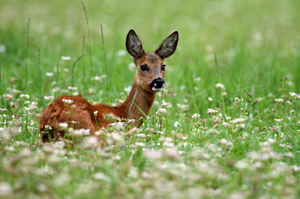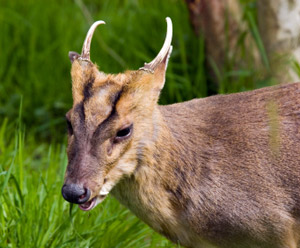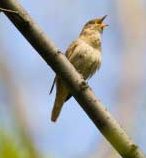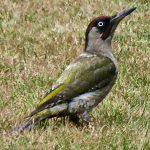Woodland birds and deer

Woodlands throughout the U.K. currently support very large populations of various species of deer. The indigenous deer species are Roe Deer and Red Deer. Fallow Deer were introduced by the Normans but in the late C19th / early C20th Chinese water deer, Reeves Muntjac and sika deer arrived. The three most widespread and abundant deer species now are Roe deer, Fallow deer and Reeves’ muntjac.
The total deer population is currently at a very high level due to :
- The absence of large predators (lynx, wolf etc)
- A decline in hunting
- The Autumn sowing of crops - which is a source of winter food for such foraging animals
 The foraging activities of deer species has been associated with the decline in the numbers of various woodland birds; for example - the lesser spotted woodpecker, the willow tit, the marsh tit and the nightingale .
The foraging activities of deer species has been associated with the decline in the numbers of various woodland birds; for example - the lesser spotted woodpecker, the willow tit, the marsh tit and the nightingale .
DEFRA commissioned a study into this decline. Dr. Markus Eichhorn (University of Nottingham), with the aid of Dr. M Smith (Department of Engineering) studied some 40 woodland areas - using special laser technology [Terrestrial laser scanning (TLS)]. The laser technology enabled the researchers to build ‘pictures’ of the woodlands from the herb layer through the understory and up to the canopy. These ‘pictures’ revealed that where there were dense deer populations (more than 10 deer per square kilometre) there was considerably less foliage - this reduction was from ground level up to two metres above the soil.  This corresponds to the feeding / browsing habits of the deer - who can reach up to a height of approximately two metres.
This corresponds to the feeding / browsing habits of the deer - who can reach up to a height of approximately two metres.
Thus, the main impact of increasing deer numbers is a reduction in the vegetation below a height of two metres.This affects habitats for birds such as the Nightingale, Willow Warbler, Garden Warbler, Dunnock, Song Thrush and Bullfinch). Through the deers' selective browsing, there is a change in the ground flora from one which is herbaceous with various wild flowers to one dominated by coarse grasses and sedges. It is possible that the deer also have an indirect effect on the food supply available to certain birds -  by changing the insect and spider populations in such areas, and also by consuming berries and seeds.
by changing the insect and spider populations in such areas, and also by consuming berries and seeds.
One curious discovery in this ‘laser study’ was the finding that where the deer populations were high, the trees were (on average) some 5 metres taller.
Comments are closed for this post.

Hi
You have a fabulous picture of a Roe (Doe?) Deer on the home page of your website.
If possible, we would like to use this as part of the launch of a Facebook page for our community meadow here in Basingstoke.
Our volunteer Kempshott Conservation Group (KCG) started in 2006 with three Borough owned sites in SW Basingstoke we manage for biodiversity. We have a Facebook page for one of our sites (The-Orchard-Kempshott)and this has been so successful we would like to set up one for Down Grange Meadow.
Your photo is just what a couple of us saw in the Meadow three weeks ago!
Please let us know what attribution you want us to display.
Many thanks
Steve Goodwin
Chair
Steve Goodwin
18 August, 2020